
What is cannabis oil?
Rick Simpson Oil or RSO belongs under the category of cannabis oil. But not every cannabis oil should be called RSO. In general, cannabis oil is an oleoresin produced by the extraction of Cannabis. In other words, it is a cannabis extract containing many compounds called Cannabinoids. There are hundreds of them, but Tetrahydrocannabinol (THC) and cannabidiol (CBD) are currently known as the major ones. Cannabis oil also contains all plant’s valuable vitamins, minerals, and omega fatty acids. However, each oil’s exact chemical makeup varies due to the cannabis strain used, the extraction method, filtration, and any additional processing.
Cannabis extracts, like Rick Simpson cannabis oil or RSO, are created using solvents – volatile chemicals to dissolve the trichomes from the plant material. When the solvent is removed, it leaves behind an extract.
Best known cannabis extracts

Rick Simpson Oil (RSO). Named under the creator’s name, this super-concentrated oil is made using solvent, 99% isopropyl alcohol or Ethanol (later in this guide called the solvent or the alcohol), as an extraction method. RSO contains a full spectrum of beneficial cannabinoids. This guide will cover this method in more detail.

Butane Hash Oil (BHO). It is made using Hydrocarbons (Butane, Propane, Hexane, etc.). Usage of this type of solvents requires special safety equipment and manufacturing equipment. It’s very dangerous, therefore, creating BHO in an unapproved area without a license is a serious felony. DON’T TRY THIS AT HOME.
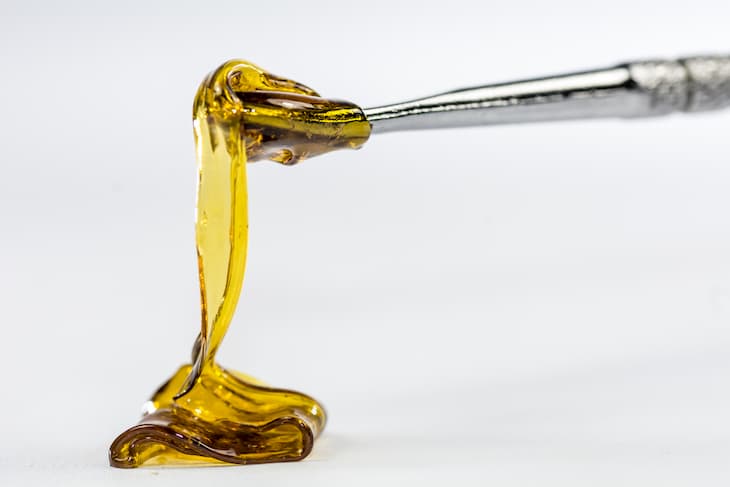
CO2-extracted cannabis wax. This cannabis extract is made using Carbon dioxide. This process is called “Supercritical CO2 extraction“. During this process, CO2 is at such extreme pressure and temperature that it fluctuates between gaseous, liquid, and solid phases. This state makes it possible to break down the cannabinoids and separate them.
CO2 extractors are becoming easier to buy on the market in legal adult-use cannabis states, but this requires special equipment and special training. In some states, it is illegal to use CO2 as well as hydrocarbons.
Before trying this method, check with the local government first (because chances are, it’s illegal). Moreover, never try to use specialized equipment without proper training because severe injury or death can result from improper or careless use of extraction equipment.
You can find people talking about a “simple hack” home-based method for this kind of extract, but it’s, actually, a dry ice method for making a concentrate (not extract) named “kief”.
What’s the difference between extract and concentrate? All extracts are concentrates, but not all concentrates are extracts. The main difference is how trichomes are collected. Extracts are a type of concentrate created using solvents (alcohol, carbon dioxide, etc.) that essentially wash the trichomes (the hairs found on the surface of plants that produces cannabinoids) off the cannabis plant. Concentrates made without solvents are produced using mechanical or physical means to remove and gather trichomes.
Best known cannabis concentrates
There are various ways to separate the trichomes from the raw material (cannabis flower buds and leaves) and create cannabis concentrates. These processes need specific materials and physical actions to produce.
These are the most popular examples of concentrates (that are made without using solvents).
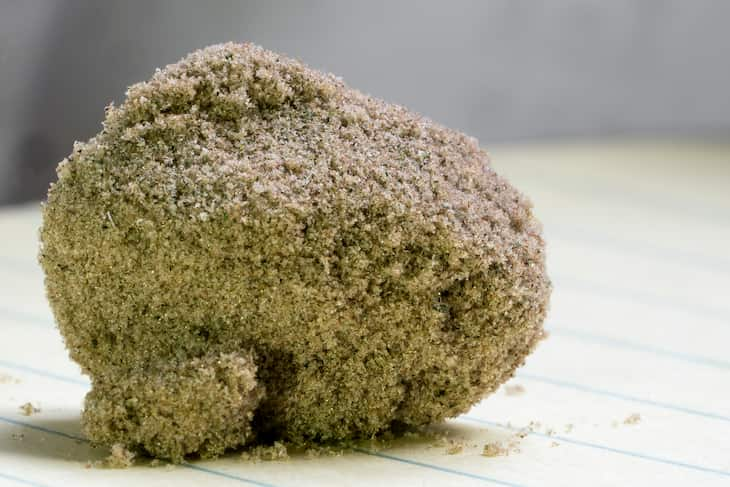
Kief. Maybe you have never thought about it, but you are making Kief every time you use a grinder. It’s the residue collected at the bottom of your grinder. The oldest and safest method is to shake the plants through the mesh. Kief contains the greatest quantity of THC and other cannabinoids; therefore, it is the source of all Cannabis concentrates.
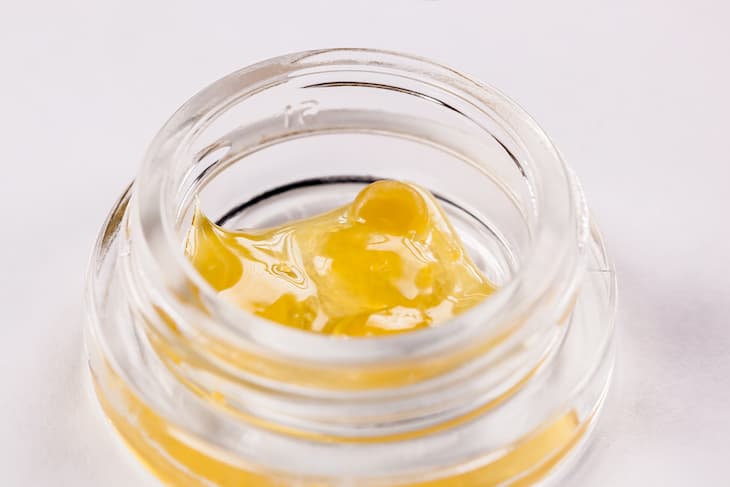
Rosin. You need low heat and very high pressure to remove trichomes from the cannabis flower buds and leaves to produce Rosin. It can also be made from hash or Kief. Because it’s a relatively fast method, doesn’t leave behind additional chemical residue, and contains high-potency trichomes, Rosin has become very popular in recent years.
Rosin presses range in price from a few hundred dollars for home-made users to thousands of dollars for industrial setups.
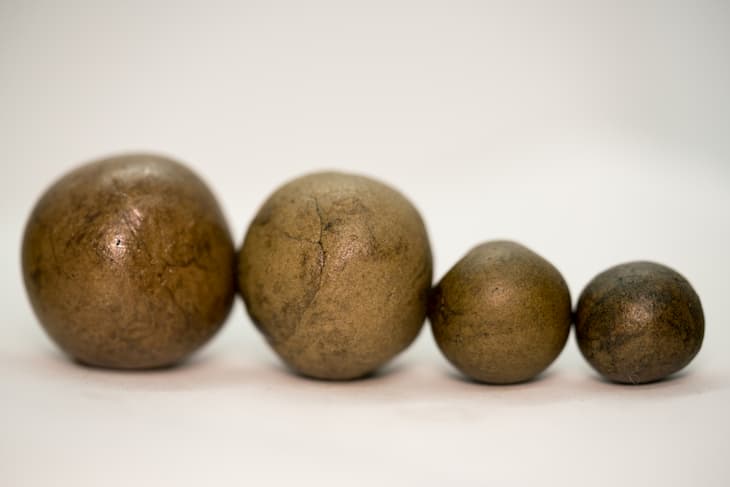
Hash. It is manufactured by applying light heat and very high pressure to Kief to form a solid mass. Using this method preserves most of the natural cannabinoids and terpenes in the final product.
The benefits of RSO
RSO is very often confused with cannabidiol CBD oil. In most cases, people can’t tell the difference between them. In short, along with the enormous medicinal benefits of CBD oil, RSO contains a full spectrum product, which means it is a whole plant extract, including THC and other major cannabinoids that CBD doesn’t have. Most of them are psychoactive; therefore, users having a much more euphoric medicating session than if they took CBD oil.
Thousands of people report that RSO helps treat and/or relieve symptoms of various diseases. The list of the most common ones is quite long:
- Cancer
- Multiple sclerosis
- Arthritis
- Infections
- Inflammation
- Depression
- Insomnia
- Parkinson’s disease
- Regulate and prevent diabetes
- Slow development of Alzheimer’s disease
- May Reduce Acne
- Recovery from chemotherapy
Results of studies on cannabis oil
Rick Simpson came up with a decision to try cannabis oil after reading the results of a 1975 study that tested the use of cannabinoids in mice with lung cancer. The study results were shocking: both THC and another cannabinoid called CBN slowed lung cancer growth in mice.
Since then, more studies about the effects of cannabinoids on cancer growth has been made. One of them, in 2014, examined the effects of THC and CBD extracts alongside radiation therapy. The cannabis extracts increased the effectiveness of radiation against an aggressive type of brain cancer. According to the authors, these results showed that both THC and CBD might help better prepare the cancer cells for radiation therapy.
However, some studies showed the opposite reaction involving human cells – THC actually increased certain lung and brain cancer cells’ growth rate.
In 2016, there have been a few early-stage clinical trials involving human participants with cancer. These studies have shown that cannabinoids are safe to use in cancer patients, but they could not fully determine if cannabinoids can help to treat cancer. We still know too little about cannabinoids. Therefore, much larger, long-term studies are needed to understand how different types of them affect cancer cells fully.
Cannabis oil dosage

If you are a medical patient, it is always recommended to consult your physician before starting any new treatment. Despite your enthusiasm towards RSO, many physicians may be opposed to it as a treatment course. If you decide to use it, proceed with caution and at your own discretion. Furthermore, it’s always advisable to keep up with any other treatments recommended by your doctor while using RSO.
The RSO treatment below is recommended for symptom relief for a condition or medical benefits for one patient. According to Rick Simpson, one course’s goal is to consume 60 grams of oil over the 90 days progressively.
Week 1: Three doses (the size of half a grain) per day (morning, noon, and before night).
Weeks 2-5: Doubling the dose every 4 days. Usually, it takes between 3 and 5 weeks to reach the full dosage of 1 gram per day.
Weeks 5-12: Take 1 gram daily until you’ve consumed the full 60 grams. Ultimately, the patient will be taking about 8 rice-sized drops of RSO every eight hours.
After a 12-week treatment, you may want to continue, but the rate should be significantly reduced. Around 1-2 grams of RSO per month should be enough for a regular maintenance dose.
Quite often, people start using this cannabis oil prophylactically without having any severe illness. One of the reasons could be insomnia. In this case, CBD oil might do the work too, and you would avoid consuming psychoactive cannabinoids like THC. Suppose you still decide to proceed with RSO. In that case, the dosage should be minimal, as it’s a super-concentrated substance and has a very strong effect. Good practice would be to dilute RSO with regular Hemp oil (can be used olive or coconut oil too, but Hemp oil is more suitable) in a ratio not higher than 1:1.
TIP: before mixing the substances, prepare a small container (an eye drop bottle is very suitable for this, make sure you have cleaned it well before using it). Fill the wanted amount of RSO, let’s say 1 ml. Then, fill 1 ml of hemp oil on top. For the substances to mix up properly, dip half of the container into the 120°F (around 50°C) water for several minutes. Then the substances get warm enough, close the lid of the bottle, and shake it. If the container is see-through, remember to keep it in the dark place.
Side effects of RSO
As we mentioned before, Rick’s oil has a high amount of THC – psychoactive substance, meaning it can produce a range of side effects. The most common one is sleepiness when used in high dosage for serious treatment, which plays a vital role in the healing process.
After taking a dose, within an hour or so the oil is telling you to lay down and relax. Don’t try to fight the sleepiness effect. Just lay down and get comfortable, then allow the oil to give you the rest and relaxation you require to heal properly, – Rick Simpson
Increasing the dosage as instructed above, your body will get the tolerance during the time for psychoactive effects. Daytime sleepiness should fade within one month.
Other known side effects that might occur:
- Hallucinationsparanoia
- Anxiety
- Disorientation
- Irritability
- Dizziness
- Slow digestion
- Impaired reaction time
- Impaired memory
However, these side effects may only last for several hours and usually don’t pose any significant health risks.
The story of Rick Simpson

If you are a cannabis enthusiast or activist, most probably you have already heard about Rick Simpson but may not know the story behind RSO.
Rick Simpson never intended on creating any cannabis product. However, the accident that led to a significant injury changed his life completely.
In 1997 Rick Simpson was working as a hospital engineer in Canada when the accident happened. He was working in a hospital’s boiler room covering asbestos on pipes. The room was poorly ventilated, and toxic fumes soon built up everywhere. It caused a temporary nervous system shock, making him fall off his ladder and hit his head unconsciously. His colleagues found him and took him to the emergency.
For several years after this accident, Rick kept experiencing ringing in his ears along with dizziness. The doctor’s prescribed medication had little effect and later even made his symptoms worse.
He became interested in the medicinal benefits of Cannabis, but the doctor rejected any possibilities of marijuana treatment. Despite the doctor’s feedback, he continued watching multiple documentaries about the positive medical effects of marijuana and ended up sourcing cannabis on his own, which led to a significant improvement in his tinnitus and other symptoms.
In 2003, Rick Simpson was diagnosed with skin cancer after noticing small bumps on his arm. As his previous cannabis treatment worked well, he began searching for the information about the possibilities of using it to treat skin cancer. He found a study from the Journal of the National Cancer Institute in which THC was found to kill cancer cells in mice. This discovery led him to create the oil that would later become RSO to treat his cancer by applying a topical form of cannabis oil. In less than a week, the cancerous growths had almost disappeared.
Rick’s doctor refused to recognize that cannabis oil was responsible for his own successful treatment. But Rick had no doubt about this magical plant’s medical powers and began cultivating marijuana plants to create his own cannabis oil and distributed it to those who needed it the most, free of charge.
Rick Simpson has helped to treat more than 5,000 patients, but his devotion and kindness were not without struggles. Multiple raids, over 2,600 plants were cut down and confiscated by the Royal Canadian Mounted Police, which led to arrest and persecution in his native Canada. But Rick was unstoppable. He wanted to make sure that others weren’t denied access to this remarkable treatment due to a lack of understanding and continued to distribute his cannabis oil. Till this day, Rick Simpson continues to spread the word of his findings, but now he clarifies the separation between himself and anyone who makes the oil to sell online.
How to make Rick Simpson Oil?
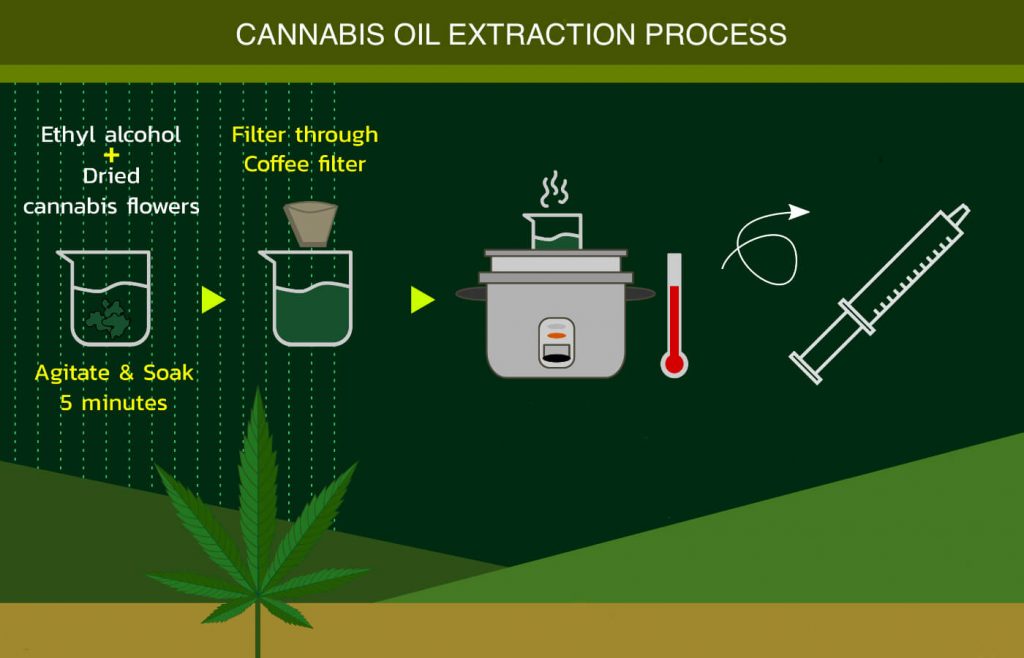
Before starting, you have to understand that this process carries some risks. First, you’ll need to obtain a fair amount of marijuana, which is still illegal in some states. Furthermore, this process requires a high quality of 99% isopropyl alcohol or Ethanol (solvent), which might also be unlawful in your area. And, of course, the process for creating cannabis oil is quite risky because the solvent is very inflammable. But despite all this, compared to other forms of cannabis extracts, RSO is widely popular because it’s not too difficult to make.
What’s needed before starting?
- Cannabis (good quality). You will need 1 pound (~450 grams) of it and 2 gallons (7.5 liters) of solvent 99% isopropyl alcohol or Ethanol. This ratio of materials will produce enough cannabis oil for a 90-day treatment (~90 grams of oil).
- Rick recommends using Indica cannabis strains for best results but can be used any other strain if it works the best for your medical condition.
- 2 buckets with capacity 2.2 -2.5 gallons each (8-10 liters).
- Heat resistant spoon for stirring. It might be plastic or wooden.
- Kitchen strainer
- Cheesecloth
- Funnel
- Coffee filter
- Clean water containers, at least 2 of them (you can buy a couple of 1-gallon natural spring water from any supermarket). You will need to fit all alcohol.
- Pair of dishwashing gloves
- Rice cooker with an open top. Fits any, but with temperature control even better
- Plastic syringe with no needles (Couple of them with capacity 60ml)
- A household fan
- A respirator is recommended
Step-by-step instructions
Remember, the quality of your material is more important than quantity. The more medical values the finished oil contains, the better it work as a medicine. We recommend using only buds and from a carefully selected strain that fits you best.
Preparation of material
[1] Preparing cannabis
The first part of the process starts with placing your dry cannabis material into the Bucket. Crush it all using hands or using any clean wooden stick or any similar device.
[2] Adding solvent
Pour in the alcohol in the same ratio as we wrote before. If you have 1 pound of cannabis, fill up 2 gallons of solvent. Continue crushing the bud material using a clean wooden stick, or use kitchen gloves and do it by hands. Proceed for 5-10 minutes. When done, you may leave it for another 10-15 minutes. If your buckets have a lid – close it.
[3] Separating cannabis
Using a kitchen strainer and a cheesecloth, drain the solvent from your plant material into another bucket. The purpose is to separate rough particles from the solvent. At this point, about 80% of the THC already dissolved into the alcohol. You may repeat the process using the same plant material with fresh alcohol.
[4] Filtration
The last step of material preparation is to separate tiny particles of cannabis from the alcohol. Insert funnels into the top of the water container’s openings, then put large coffee filters in the funnels. Slowly pour your prepared alcohol.
This process will take a while, but changing the coffee filters more frequently may save some time. Also, the more funnels and containers you use, the faster you finish processing the whole alcohol prepared. When you are done, you can close the bottles until you ready to start the next part of the process. With the bottles securely closed, it may be postponed even for a couple of days. Just keep them in the dark safe place away from heat and fire.
The process of boiling
Before starting, you will have to choose the place to do it. The fumes of boiling alcohol are toxic, and the smell is very intense. Therefore the best area would be outdoor. We don’t recommend indoor. It will pose a significant health risk or even risk of fire if something unplanned happens.
[1] Preparing a workplace
The first step would be to place your rice cooker, where it will be comfortable for you. Set up a household fan in the distance facing a little bit up so that the fumes do not reach it, but it could effectively blow the toxic fumes away from you. We also would highly recommend using a respirator.
[2] Start boiling
Fill your prepared alcohol (from the water container) in your rice cooker until it is about ¾ full, and turn it on. It will start to boil soon, and the alcohol will slowly evaporate. As the level in the rice cooker drops, continue to carefully add the solvent oil mix (your prepared alcohol) you have remaining until you have nothing left.
The oil temperature should not reach more than 266°F (130°C). Otherwise, it will start to vaporize the cannabinoids off the oil, and the RSO will be unusable. If your rice cooker has temperature settings, adjust it to around 230°F (110°C). Better set it lower than higher. Cheaper rice cookers do not show the temperature, but it usually turns off from high heat to low when it reaches about 270°F. Make sure that the household fan is blowing the toxic fumes away from you.
Note: near to the cooker, avoid all flames, stovetops, sparks, and cigarettes, as the solvent is highly combustible.
[3] Adding water
When everything that’s left is in the rice cooker, wait until the solvent oil mix has been reduced to about a few inches from the bottom. Add about 10 to 12 drops of water. This will help to release the solvent residue and evaporate more quickly.
[4] Swirling process
When there is about one inch of the solvent-water mixture in the rice cooker, put on a pair of heat-resistant kitchen gloves and then pick up the cooker and begin swirling its contents. This is done with the airflow from the fan still blowing the toxic fumes away.
[5] The last touches
As the last of the solvent is being boiled off, a crackling sound from the oil that is left should appear. A small amount of smoke might be noticeable coming off the oil.
When the heat increases, the cooker will automatically switch from the high heat setting and low, which prevents the oil from overheating. Let it cool down a bit until it can be switched to the high heat setting again. If no bubbling appears, it means all alcohol has already vaporized and left only pure oil. Otherwise, you might need a couple of minutes of more boiling.
TIP: people often add an extra step to make sure that the whole solvent is vaporized from cannabis oil. Pour cannabis oil into a heat-resistant dish (for example, clay dish for baking). Put it in an oven set at 215 °F (100 °C) for about 30-60 min.
[6] Preparing for storage
After you finish, let the cannabis oil cool down a bit and shrink it into syringes. When cold, RSO will be thick, so if you have trouble dispensing it, dip the syringe into hot water (not boiling).
Final word
The whole process usually takes around 5 hours to accomplish, and then the medicine is sitting there ready to be used. At first, it may seem complicated for some to try to produce their own cannabis oil, but this process is extremely simple in reality.
It’s worth mentioning that this cannabis oil has an extremely long shelf life. But for long-term storage, it is recommended to put it in a dark container with a tight lid. When kept in a cool dark place, it can maintain its medicinal potency for several years.
Although many patients have experienced significant relief from their medical symptoms and conditions, Rick Simpson Oil should not be considered a cure for all medical conditions as more scientific experiments are needed.
Frequently Asked Questions (FAQs)
Where to buy RSO?
You can buy it in all states where recreational cannabis is legal. But be aware that the product might not be identically the same. Each oil’s exact chemical makeup varies due to the cannabis strain used, the extraction method, filtration, and any additional processing.
What is the difference between Rick Simpson Oil and CBD oil?
CBD oil is made from the hemp – cannabis plant containing less than 0.3% THC. It has only one non-psychoactive cannabinoid called CBD.
RSO oil is a cannabis extract containing a full spectrum of chemical components from the whole plant, including massive amounts of psychoactive Tetrahydrocannabinol (THC).
People have experienced amazing benefits from using both CBD and RSO, but RSO is the main ingredient when it comes to defeating cancer.
Is it legal to make RSO at home?
As long as the cannabis and the solvent used (99% isopropyl alcohol or Ethanol) are legal in your area, there should be no problem making it for your own use at home.
Is the process of making cannabis oil dangerous?
Although making RSO is one of the easiest ones from all extracts, it certainly brings some risks. The process involves solvents (like 99% isopropyl alcohol or Ethanol) used to extract the oil from the cannabis plant that are all highly flammable.
Can you smoke RSO?
In short, yes. You may smoke it if it was made qualitatively and there is no solvent left. But it’s advisable better to choose other extracts like BHO or CO2-extracted cannabis wax, or concentrates where no solvent is used to make them (Kief, Rosin, Hash). RSO is more suitable for oral usage or as a topical (rubbed into the skin) for skin cancer treatment.
How to check the quality of cannabis oil (RSO)?
Apply a little bit of RSO on clean white paper. The oil itself should be very thick. Squeeze and spread it to the side. It has to have a golden amber color when spread on the paper (if it’s black or very dark when spread, avoid this oil). Sometimes the color might be golden amber with a green tinge. This one is acceptable too, and it’s most likely because there was not filtered enough and some chlorophyll from the plant left.


